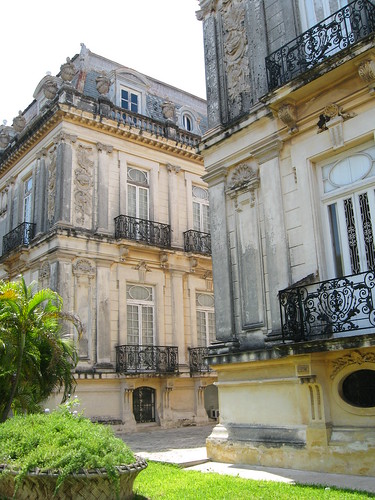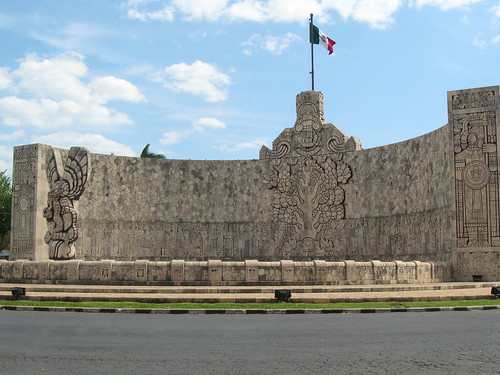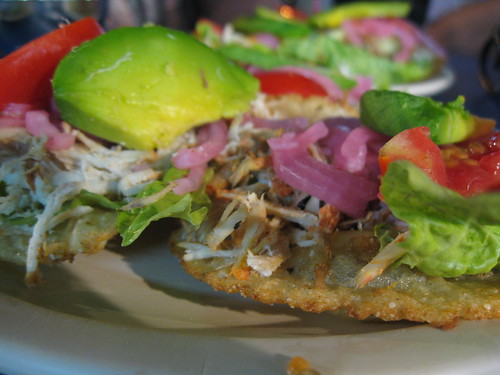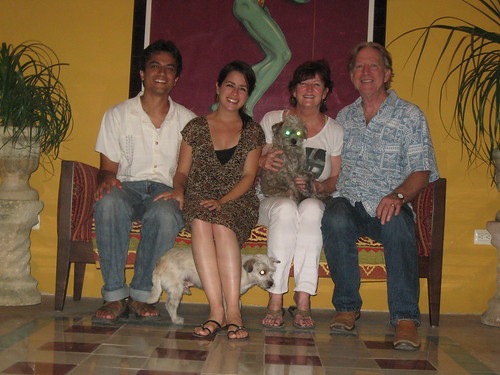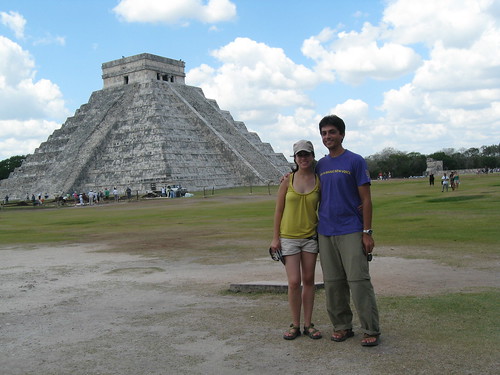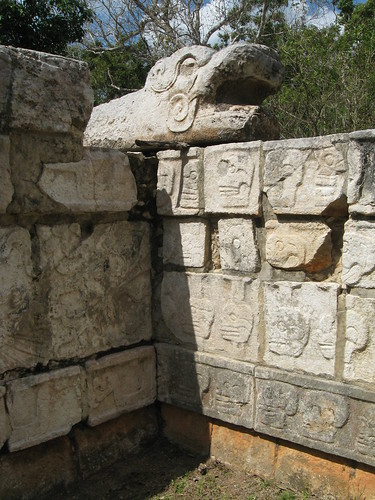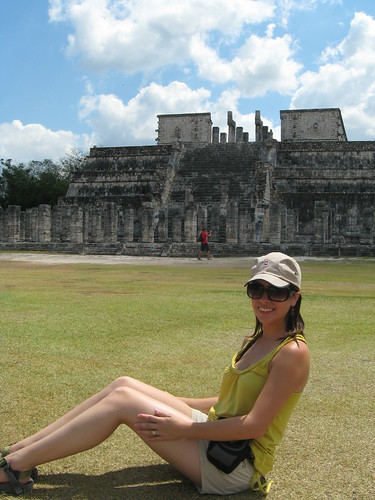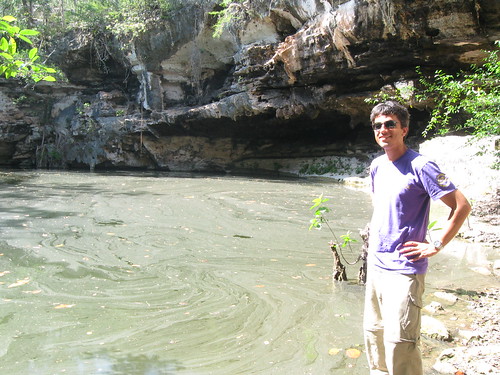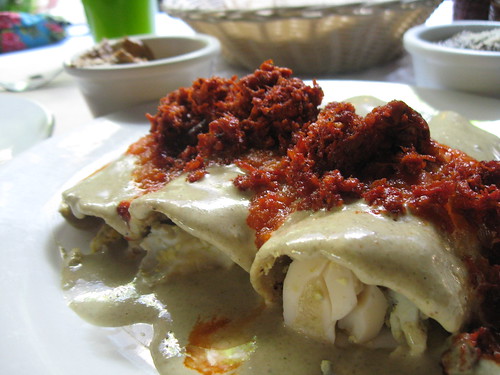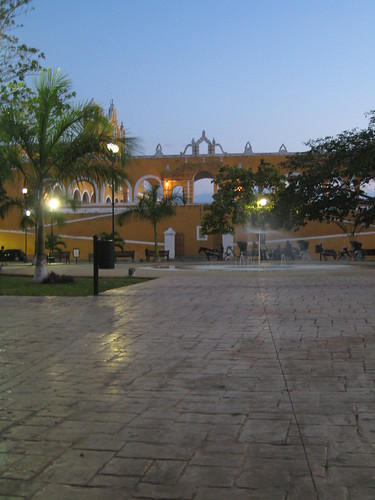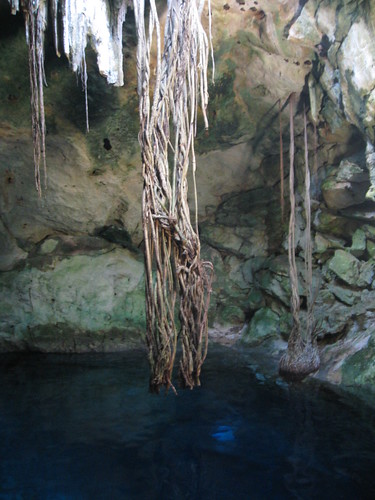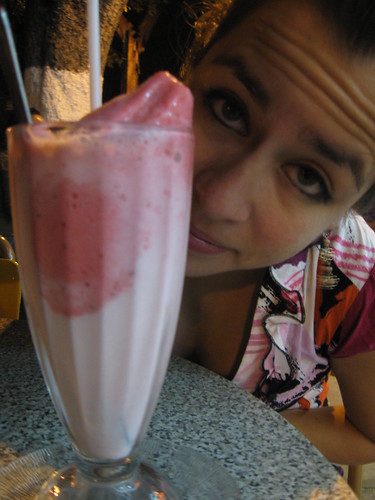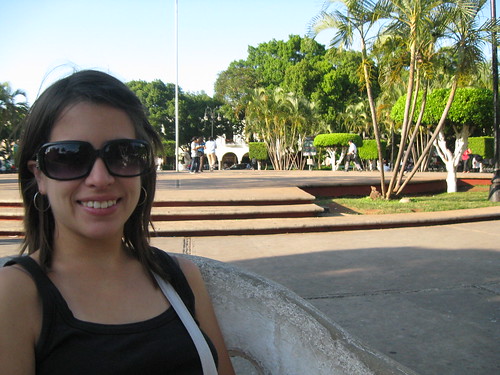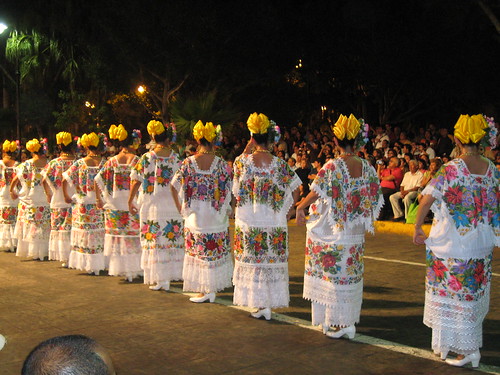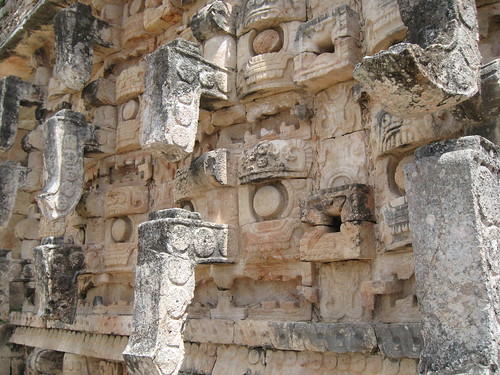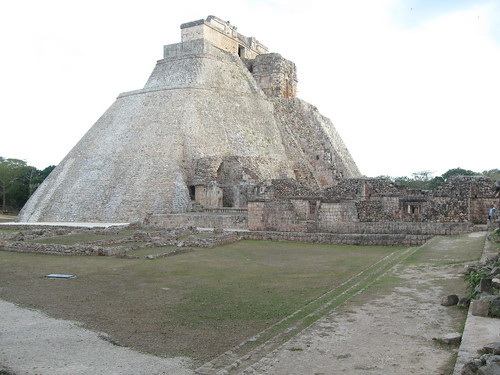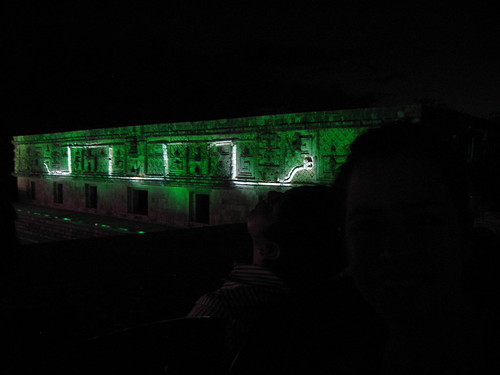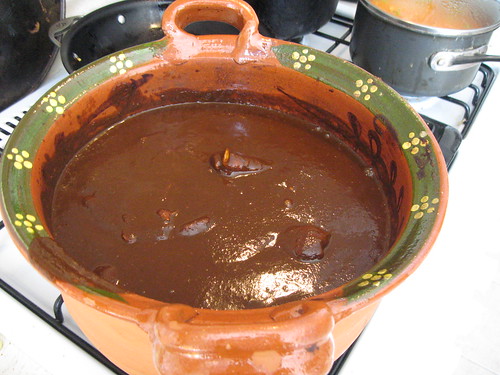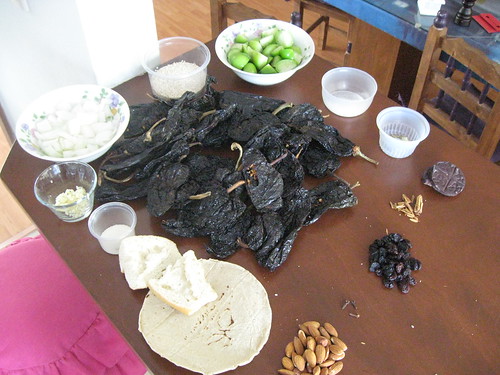Day 6: Celestún
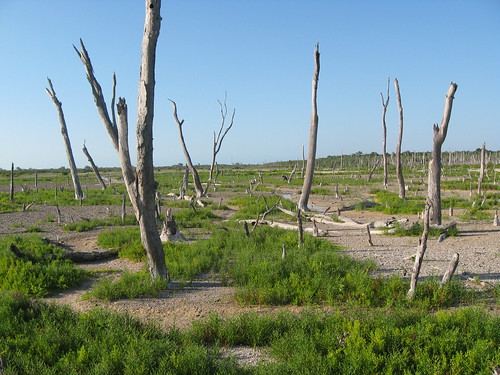
Mérida is almost literally at the center of the Yucatán, so everything is relatively close, including the beach. Although we had gotten a nice strong dose of waves and sand in Mazunte recently, we still wanted to head to the coast at least for a day, so we went west to the town of Celestún on the Gulf coast. It didn´t take us long to get there (and we had finally started to figure out a clean exit from the city) along the usual straight, flat Yucatán highways.
Celestún is located in a biological reserve that includes coastal waters, mangrove lagoons, and flamingo nesting and breeding hotspots. On our way into town, we pulled off to the side to investigate prices and details from the tours that they lead, but we were greeted by something that just felt off somehow, owing in no small part to the exorbitant price they wanted to charge. In the past, we have had mixed results at best with “eco-tours” and we didn´t feel like gambling this time around. Plus, it is just a real turn-off when there are a whole bunch of motorized boats cruising in and out of what is supposed to be a protected ecosystem. We decided to take a pass and just head to the beach.
One of the first restaurants we spotted from the street looked good enough so we parked, walked down to the water and ordered some ceviche. When we first arrived, the water was calm, sapphire-green, and glassy. Almost the complete opposite of the raging waves we had grown accustomed to in Mazunte. Needless to say, we were looking forward to a swim later. While we waited patiently for our ceviche, we played a couple rounds of Settlers of Catan Travel Edition and Maru won, as usual, and then during our wait for food (which continued to grow), the wind started to pick up a bit, then it picked up a lot. Next thing we knew, the waves looked more like the waves in Mazunte, and we were actually chilly from the wind, so once our massive plate of ceviche arrived (we ordered the small), we carried it into the shelter of the inside of the restaurant to enjoy.
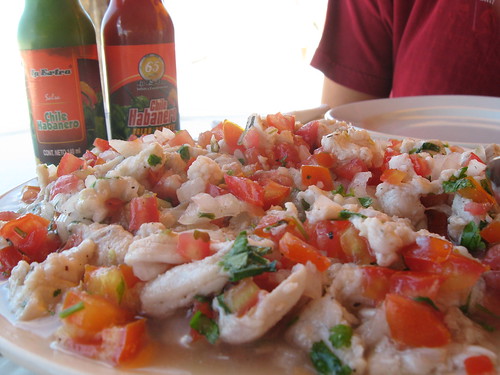
Our mountain of ceviche.
After stuffing ourselves silly with fish, we decided to try to get into the water on the still very windy beach, but we ended up just walking up and down a bit, then Maru found a really pretty set of pearls for sale. They had all sorts of colors, and they were cheap because they were not perfectly round pearls, and actually part of their charm is the different shapes. With new pearls and bellies full, we decided that Mother Nature had won the day and it was time to head back to home base in Mérida. We felt a little dejected because the whole thing was a bit of a bust, but our reward was waiting literally just around the bend.
On the road out of town, a sign caught our eyes that offered tours of the lagoon in canoes, not in motorized boats. We thought, why not? Couldn´t be worse in price than the tours at the entrance. It turned out to be a highlight of our entire trip. For 2.5 hours we had a riverboat and a young, knowledgeable guide all to ourselves, and they even gave us each a really decent set of binoculars, all for less than the price of the other tour. (Sidenote: Maru and I have decided that we have to purchase a small pair of binoculars for our trips. There are so many instances when it would be great to have a pair.) Our guide, Christian, pointed out the different kinds of mangroves, horseshoe crabs (a first for Maru), enormous, tree-bound termite nests, different species of fish, and a staggering variety of water fowl. We spent a fair amount of time in a long mangrove tunnel where the water was shallow and calm and we could ask the 80 million questions we always have. Christian was young (17, I think), but he knew just about everything there was to know. Not only did he grow up nearby, but the cooperative that runs the tours intensively trains their guides.
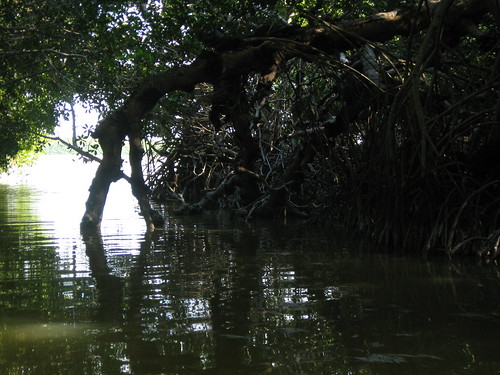
The mangrove tunnel.
The tour included a few short walks and even a ¼ mile bike ride at the end, so we got to enjoy the scenery from lots of different perspectives. In spite of Celestun´s flamingo fame though, we didn´t even see one. One “disadvantage” of the tour we chose is that it only stops at what they call the flamingo dormitory, which is where they roost for the night, but when we arrived we were too early. Oh, well. We had seen thousands of flamingos up close and personal near the Uyuni Salt Flats in Bolivia. But, we still had an interesting moment at the dormitory. While we were admiring the view and spying other types of birds, the wind from earlier in the day picked back up. We were at the end of a long dock in the middle of the lagoon, so the wind whipped around us, and out of nowhere, while I had my hands and concentration firmly focused on my binoculars, a gust picked my sunglasses up off my shirt where they were hanging and knocked them down. I lunged for them on the dock, but another little gust blew them into the water, and they sank.
Sidebar: I have a storied history with sunglasses. My Aunt Laurie has always gotten us nice glasses, and the last really nice pair she got me, I lost (or they were possibly stolen) several years ago in Xcaret. I bought myself another, not-so-nice-but-not-so-bad pair and left those on a bus to Mexico City, and then my brother gave me a nice pair of Oakley´s that I took to South America, where they broke and were duct taped for half the trip. Sigh. After our trip to the beach in Mazunte, I decided that I had to bite the bullet and buy myself a pair here in Mexico even though prices on things like that tend to be much higher here than in the States. My aunt is always talking about Maui Jim´s, and I found out that while they are a bit more expensive here, it wasn´t so much that it was worth the wait, so I slapped down the cash for a nice pair of glasses, promising myself to take care of them and enlisting Maru in helping me. They are great glasses, and the pair I bought is super light. It doesn´t feel like you even have anything on your face, and they do not resist strong gusts of wind in the middle of flamingo dormitories.
So you can imagine my dismay at watching my one-week-old pair of glasses go into the drink. Honestly, I am not one to get attached to stuff, but that was a hard one to take. I knew the lagoon was shallow, and I was about to jump in when Christian, our guide, calmly said, “No, I´ll go for the boat and get in.” I tried to protest, thinking there was no reason for him to get wet, but he insisted, walked down the dock to the boat, and paddled over to where the glasses were, then got out, and fished them out in about five seconds. Lucky day, especially considering that the water was so murky, you couldn´t see a quarter inch down. Oh, and for another reason too, but let me get to that.
Then—oh yes faithful readers, there is a “then”—I decided to pocket them for the time being, so I took the little bag they go in out of my pocket and was trying to position it to get the glasses into it, when the wind snatched the bag out of my hand and blew that into the water. Facepalm. I couldn’t have cared less about the dumb bag, but I also didn´t want to leave litter like that in a biological preserve so I reluctantly informed Christian, who was returning the boat to where it was, of what happened. He said he would try to grab it so that it didn´t float away, returned to the spot, and was fishing around with his arm when he casually informed us that there are hundreds of stingrays buried in the sand of the lagoon. In case you don´t know, stingrays are dangerous because they bury themselves in sand in shallow water, and when you step on them, they don´t like it, and they live up to their name. If I felt like an idiot for dropping something in the water twice, I felt even more so that this kid was fishing around and risking a potentially deadly sting for something worthless. I told him to please forget it, and then Maru also insisted that he return to the boat, which he did, chuckling all the while at a dumb American tourist. Again, facepalm.

This was about 2 seconds before he mentioned the sting rays.
On the last leg of our journey back to where the tour started, Christian continued to tell stories about the stingrays around there. Apparently, they are so prevalent in the lagoons that the local fishermen get stung frequently. He even told us about his dad getting a bad sting once. Needless to say, I thanked him profusely for going in and for not letting me just jump in (That could have made for an interesting blog. I was about 2 seconds away from doing it.) He just smiled good-naturedly and moved on to tell us about the petrified forest we were then looking at. It was eerie, but gorgeous. All in all, no one was stung, my glasses were recovered, we learned a lot about the area, and saw lots of interesting flora and fauna. We were glad we skipped the first tour.
After we got back to Mérida, we found a little Italian place and ate some delicious pizza, then we called it a night.
Here are all of our Day 6 pics.
Day 7
Our last full day in Mérida was Sunday, and Mérida on a Sunday is not to be missed. The streets around the main plaza are closed to traffic, people cruise around on bicycles, and hundreds of vendors fill the square with all sorts of things to sell; snacks, clothing, handicrafts, artwork, hats, knick-knacks, you name it. We ate breakfast then headed right downtown where we started things off with another marquesita. After our marquesita, we went on a free tour of the Casa de Montejo.
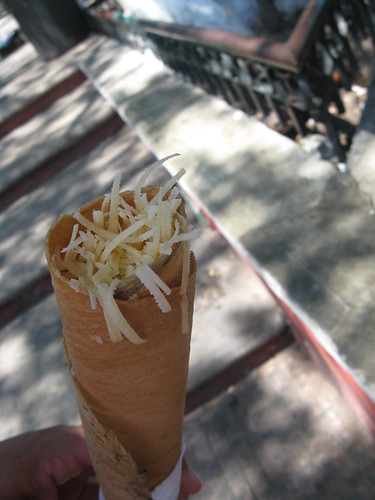
Marquesita with Edam cheese.
Montejo was the name of the principal conquistador of the Yucatán. His son and nephew also inherited his legacy. They were probably swell guys, I´m sure. What is now known as their house has an elaborate façade facing the main square, and the inside was remodeled at the end of the 19th century by the then owners. Banamex (a big bank here) bought the building and used it as offices for a while before turning it into a museum. It´s full of cool looking 19th century-rich-people-stuff. Eh. For someone interested in architecture from the period, it´s worth a look.
Now it was finally time for our visit to the market! We don´t consider a visit to any city in Latin America complete without a walk through the market, and we were really looking forward to Mérida´s. Turns out, it´s huge. Three stories, and it sprawls over what must be at least two city blocks. Unfortunately, most of the stalls were closed because it was Sunday, but we still got a good sense of everything, and I bought some things I wanted, mainly different concentrates of sauces (like moles) to make some Yucatecan goods at home.
At that point we needed a snack, and we stumbled on a street of taco stands on one side of the market, sat down and ordered three rounds of different things to try: torta de carne asada, tacos de poc chuc, and tacos al pastor (Al pastor is really common in Puebla, but it´s a little different in Mérida.) All that and a coke: 36 pesos. I think both of our jaws dropped a little at how cheap that was.

Torta de carne asada. That´s a sandwich!
Back at the square, we bought ourselves little carved, wooden containers for salt and sugar, and then we found a gorgeous little guayabera (the white cotton shirts that are common in this part of the country) for our nephew, José Tobias. We bought it big because the kid is huge, and we can´t wait to see him in it! From there, it was time for a short rest and swim at the hotel, then we were back in the plaza for the Sunday night open-air dancing! It was great; live music, a cool breeze, and hundreds of happy couples. Maru was a little reluctant to join in because we were the youngest by easily 25 years, but it was worth it. After the first band played lots of Mexican golden oldies, a more modern band took the stage, and we hung out until we were hungry.
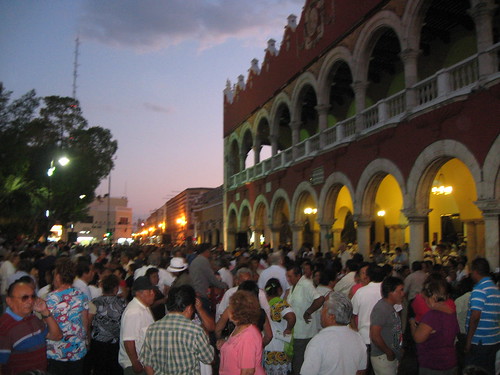
Dancin´ in the streets!
In all our time eating out over the course of the week, we hadn´t gone out for a nice dinner, so this time we decided to splurge a little and ended up at a restaurant on the Paseo de Montejo called Slavia. It´s sort of an Asian fusion type place with kind of bizarre décor. We ordered a couple of glasses of wine, a Vietnamese spring roll and a seared tuna steak. Everything was cooked perfectly, and the tuna in particular was very yummy, but I found the meal to be pretty forgettable, especially for the price. Things have got to be top-notch to warrant a high price tag in a restaurant, and something about this just fell short (it didn´t help that a glass of wine was 90 pesos!). So we skipped getting dessert there, headed back to the square, got a rice pudding, and soaked up the Mérida night one last time.
Our last morning consisted of packing, going out for breakfast, buying a coconut ice cream cone (in a homemade cone!), turning in the rental car, and heading to the airport. We had a wonderful time in the Yucatán, and we will definitely be heading back there in the future.
Here is the link to our Day 7 pics.
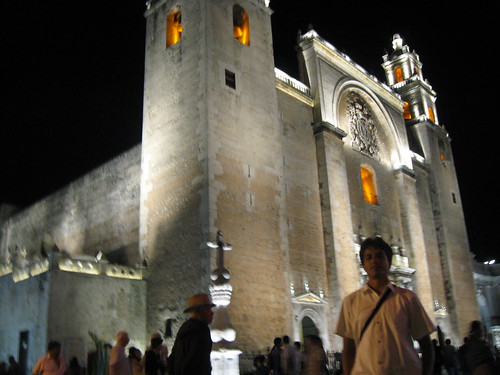
The white cathedral.













